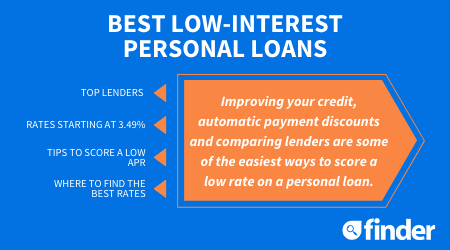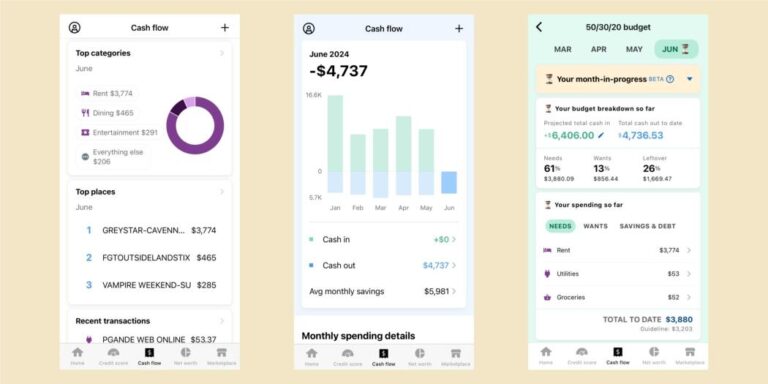Where To Get A Personal Loan With Low Interest
Securing a personal loan with low interest rates can feel much like finding a needle in a haystack, except with the right knowledge, the task becomes remarkably easier. Years ago, the general public believed that low-interest loans were a privilege only afforded by credit unions. But now, the financial landscape is expanding with options for savvy borrowers who know where to look.
Historically, banks have been perceived as the primary source for personal loans, yet they often come with strings attached. Nowadays, online lenders compete by offering enticingly lower interest rates due to reduced overhead costs. Platforms such as Lending Club and SoFi have revolutionized access to personal loans, making it more straightforward and economical for individuals, thanks in part to their technology-driven models.

Where to Get a Personal Loan With Low Interest
Finding a personal loan with low interest rates can save you a lot of money over time. Traditional banks are a common option, but they might not always offer the best rates. They often require a good credit score, so it’s important to have yours checked before applying. However, if you’re a long-standing customer, your bank might offer better terms. Always inquire directly to see if there are any hidden perks or discounts available.
Next, consider a credit union, which often provides loans at lower rates compared to banks. Credit unions are not-for-profit, which allows them to pass savings onto their members. You might need to join the credit union to apply for a loan, but the savings could be worth it. Membership usually requires a small fee or deposit. Remember, these organizations aim to help their members thrive financially.
Online lenders are another viable choice for personal loans with low interest rates. Websites such as Lending Tree or SoFi often boast lower rates due to reduced operational costs. They can provide a quick approval process, sometimes within a day. This can be a great choice if you need funds quickly. It’s wise to compare multiple offers, as each lender might have slightly different terms and conditions.
Lastly, peer-to-peer lending platforms have become increasingly popular. These platforms connect borrowers directly with investors, cutting out traditional banks. This system can offer competitive rates, sometimes lower than banks and credit unions. Some popular peer-to-peer platforms include Lending Club and Prosper. Always read the fine print and evaluate the fees involved to ensure you’re getting the best deal possible.
Exploring Traditional Banks
When you think of getting a personal loan, traditional banks come to mind first. Banks have been loan providers for decades, offering trust and reliability. But with this, they often come with stricter requirements like a high credit score. However, if you have a solid relationship with your bank, they might offer you special rates. It’s always good to ask a bank representative about any offers tailored to loyal customers.
Walking into a bank for a loan might feel daunting. But banks offer various loan options to suit different needs. They might require more documentation compared to other lenders. However, the process can provide a sense of security knowing exactly who you’re dealing with. It’s best to prepare any necessary documents ahead of time to make things smoother.
Some people prefer banks due to their structured processes. Banks often have fixed terms and interest rates, which offer predictability in repayment. You can check your bank’s website or contact them for details before visiting in person. A simple comparison table with various banks could help you decide:
| Bank | Interest Rate | Term Length |
|---|---|---|
| Bank A | 6.5% | 5 years |
| Bank B | 7% | 4 years |
If your credit score needs improvement, reconsider relying solely on traditional banks. You’ll usually get the best rates with a credit score over 700. But don’t lose heart; banks sometimes offer secured loans if you provide collateral. This might include an asset like your car. Always evaluate the terms carefully to avoid unwanted surprises down the line.
Benefiting From Credit Unions
Credit unions are often underutilized but can be great sources for low-interest personal loans. Unlike banks, credit unions focus more on helping their members. They are not-for-profit organizations, which means they can offer better interest rates. Joining a credit union usually requires living in a certain area or working for a certain employer. It’s worth checking if you qualify for membership in a local credit union.
Many people appreciate the personalized attention they receive at credit unions. The staff tends to know their members by name, creating a friendly atmosphere. This personalized service is often why people choose credit unions over banks. To illustrate your potential savings, consider this example:
| Institution | Interest Rate | Monthly Payment on $10,000 Loan |
|---|---|---|
| Credit Union | 5% | $200 |
| Bank | 7% | $215 |
Joining a credit union requires a small fee or deposit, which often goes back into member benefits. This structure allows credit unions to support their members better financially. Additionally, they can be more flexible with credit score requirements. Even those with fair credit might find favorable terms here. Don’t hesitate to ask about any member-only offers or discounts.
Using credit unions for personal loans may also come with other perks. For example, they can offer budgeting advice to help you manage your loan effectively. Many also provide financial workshops and resources as part of their member services. This holistic approach can be especially helpful if you need extra guidance. Always explore all the benefits offered to make the most of your credit union experience.
Discovering Online Lenders
Online lenders have revolutionized how people get personal loans, offering convenience and competitive interest rates. Unlike traditional banks, these lenders operate exclusively online, which often reduces their costs. This means they can pass on savings to you through lower interest rates. The application process is usually fast, sometimes providing approval in just a few hours. It’s a significant advantage for those needing quick access to funds.
One appealing factor of online lenders is the ability to compare offers easily. You can find numerous platforms that list various lenders side by side. This can help you quickly identify which lender provides the best terms and conditions for your needs. Some popular online lending platforms include SoFi, LendingClub, and Upstart. These platforms usually provide detailed information on interest rates, fees, and repayment terms.
| Lender | Interest Rate | Approval Time |
|---|---|---|
| SoFi | 6.99% | 24 hours |
| LendingClub | 8.8% | 1-3 days |
| Upstart | 7.2% | 1 day |
Another benefit of choosing an online lender is the flexible credit requirements. Unlike many banks, online lenders may consider factors beyond your credit score. They often look at your education and job history to give a more holistic view of your financial situation. This approach can be beneficial for applicants who are building or rebuilding their credit. It opens up more opportunities for people seeking more favorable loan terms.
Despite their conveniences, it’s crucial to be cautious when borrowing online. Make sure to research any lender’s reputation before applying. Look for user reviews and check if they have a secure, encrypted website. It’s wise to read the fine print in loan agreements to avoid unforeseen fees. Doing some due diligence can help you find a trustworthy lender and secure the best interest rates.
Many people find satisfaction in dealing with online lenders because of the streamlined processes. The digital nature of these lenders means you can handle most loan operations from your smartphone or computer. This factor greatly enhances the borrowing experience by saving you time and hassle. For busy individuals, this can make managing a loan much more manageable. Always ensure you have all your information ready to make the application process as smooth as possible.
A Look at Peer-to-Peer Lending Platforms
Peer-to-peer (P2P) lending platforms have changed the way people borrow money by connecting borrowers directly with individual investors. This setup eliminates the need for traditional banks, allowing both parties to benefit. Borrowers often enjoy lower interest rates, while investors can earn higher returns. Unlike some other lending options, P2P platforms have a more straightforward application process. This approach has made accessing loans more flexible and transparent.
These platforms, like Prosper and LendingClub, offer various loan amounts to match different needs. Whether you need a small amount for a quick expense or a large sum for a big project, you can find an option that fits. Once you apply, investors review your profile and decide to fund your loan. The community-driven model can create a more personalized borrowing experience. It also encourages responsible lending and borrowing practices.
P2P lending platforms often offer competitive rates due to their unique business model. Because there’s no bank involvement, the costs are generally lower, which translates to better rates for borrowers. Here’s an example of typical rates and terms you might see:
| Platform | Interest Rate | Loan Term |
|---|---|---|
| Prosper | 6.95% – 35.99% | 3 to 5 years |
| LendingClub | 6.95% – 35.89% | 3 to 5 years |
Peer-to-peer platforms often have more flexible credit requirements, making them attractive to a broader range of borrowers. They consider not just credit scores but also factors like job history and potential income. This expanded evaluation makes it possible for more people to qualify for loans. It gives those who are building credit a better opportunity to secure funds. However, it’s essential to review terms carefully to ensure they meet your financial situation.
Choosing a P2P platform might seem appealing because the process is entirely online, providing convenience and speed. You can complete the application and receive approval in a few days. However, always check for fees that could affect your total repayment. Ensure the platform you choose is reputable and secure, protecting your personal data. Overall, peer-to-peer lending offers an innovative way to access personal loans with potential for favorable terms.
Understanding Interest Rates and Choosing Wisely
Interest rates play a critical role in determining the cost of your loan. Different lenders offer varying rates based on several factors, including your credit score, loan amount, and repayment term. A higher credit score generally results in lower interest rates because lenders see you as less risky. On the other hand, if your credit score is lower, you might face higher rates. This is why it’s important to know your credit score before applying for any loan.
When comparing loan options, focus not just on the interest rates but also on the Annual Percentage Rate (APR). The APR includes both the interest rate and any additional fees, giving a more accurate picture of the loan’s total cost. You should also consider whether the interest rate is fixed or variable. A fixed rate stays the same throughout the loan term, whereas a variable rate can change. Fixed rates offer stability, while variable rates might be lower initially but can increase over time.
Knowing the difference between simple and compound interest is also vital. Simple interest is calculated on the principal amount only, while compound interest is calculated on the principal plus any previously earned interest. Here’s a basic comparison:
| Interest Type | Calculation Method | Impact |
|---|---|---|
| Simple Interest | Principal only | Lower overall cost |
| Compound Interest | Principal + accumulated interest | Higher overall cost |
Choosing the right loan also means understanding the repayment terms. Shorter loan terms usually come with higher monthly payments but will cost you less in interest. Longer terms decrease the monthly payment but generally result in more interest paid over time. Weigh these options carefully based on your financial situation. A detailed repayment plan can help you decide what’s manageable for you.
It’s also wise to take into account any additional fees associated with the loan. These can include origination fees, late payment fees, and prepayment penalties. These extras can add up quickly, affecting your loan’s overall affordability. Researching and comparing these factors will help you make an informed choice. Always read the fine print to avoid unexpected costs.
Final Thoughts on Securing Low-Interest Personal Loans
Securing a personal loan with a low interest rate is a process that requires careful planning and research. By exploring various options such as banks, credit unions, online lenders, and peer-to-peer platforms, borrowers can identify the most favorable terms. Understanding the details of interest rates and repayment terms will also empower borrowers to make informed decisions.
It’s essential to compare different loan offers and pay attention to additional fees that might affect the loan’s overall cost. With the right approach and knowledge, securing the best possible loan becomes achievable. Experts can navigate these options effectively by staying informed and considering both short-term needs and long-term financial health.

